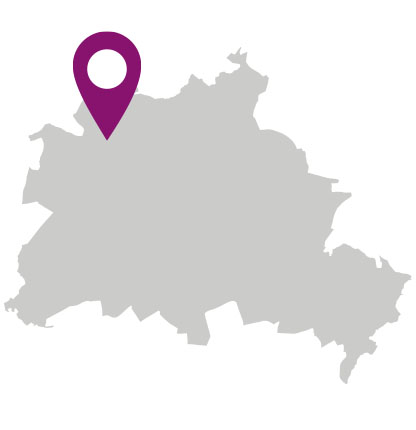The oldest tree, the oldest restaurant, the first high-rise building in town: Hidden in Reinickendorf are superlative excursion destinations.



A full 80 meters of the Berlin Wall opposite the Schönholz S-Bahn stationwent unnoticed for a few years after reunification. Only a hobby researcher draws attention to the authenticity of the wall. Since then it has been a listed building and is surrounded by a fence to protect it from damage.

Between the Schiller Park and the Schönholzer Heide Volkspark lies the almost circular Schäfersee. The path around it is ideal for a short walk. Those looking for action for the whole family will also find what they are looking for: at the mini golf course with a view of the lake. For dog lovers, the Schäfersee offers a fenced dog garden with plenty of space to let off steam. Incidentally, the lake takes its name from a sheep farm from the 18th century: the shepherd washed his animals there before shearing them.

Brightly plastered and without frills: the White City stretches along Aroser Alleeentirely in accordance with the principles of the Bauhaus style. The gatehouses on Emmentaler Straße at the entrance to Aroser Allee are particularly striking. The settlement was built between 1929 and 1931 and offered many people modern and affordable living space with their own bathroom and kitchen. About 2,000 people live here today. The White City is part of the UNESCO World Heritage Site.

Almond nougat, tiramisu truffles, marzipan brittle – gourmet chocolates made from natural ingredients are made by hand at Sawade. The oldest praline factory in Berlin has been located at Wittestraße 26dsince the 1970s. The founder Ladislaus Ziemkiewicz learned his trade in France and opened his first shop for chocolates, confectionery and sweets on Unter den Linden in 1880. Its namesake was his neighbor, Madame Marie de Savadé.
Tip:The chocolate specialties are cheaper in the factory outlet there than in retail.

With the first brick in 1922, the architect Eugen Schmohl created a novelty in Berlin Modernism: the 65 meter high Borsigturm, Berliner Straße 27, is considered the first high-rise building in Berlin. Previously, towers were only built as chimneys or water tanks. The Borsigturm was built as an office building for the administration of the Borsigwerke. Offices are still in it today.

Away from the paths in the Tegel forestry office on the north-eastern tip of Lake Tegelis probably the oldest tree in Berlin: the English oak "Dicke Marie". According to legend, the tree got its name from Alexander and Wilhelm von Humboldt, who grew up in Tegel Castle. They are said to have named the tree after their powerfully built castle cook, Marie.
Figure: Fat Marie is said to be 800 to 900 years old - and thus older than Berlin itself.

The "Alter Fritz" restaurant is the oldest still existing restaurant in Berlin. Crown Prince Friedrich of Prussia is said to have drunk his beer here. After a refurbishment, the operators have succeeded in creating a rustic mix of old and new in Karolinenstraße 12at Schlosspark Tegel - with hearty Bavarian, Berlin and Brandenburg cuisine. In summer, the Alte Fritz offers space for up to 600 people.
